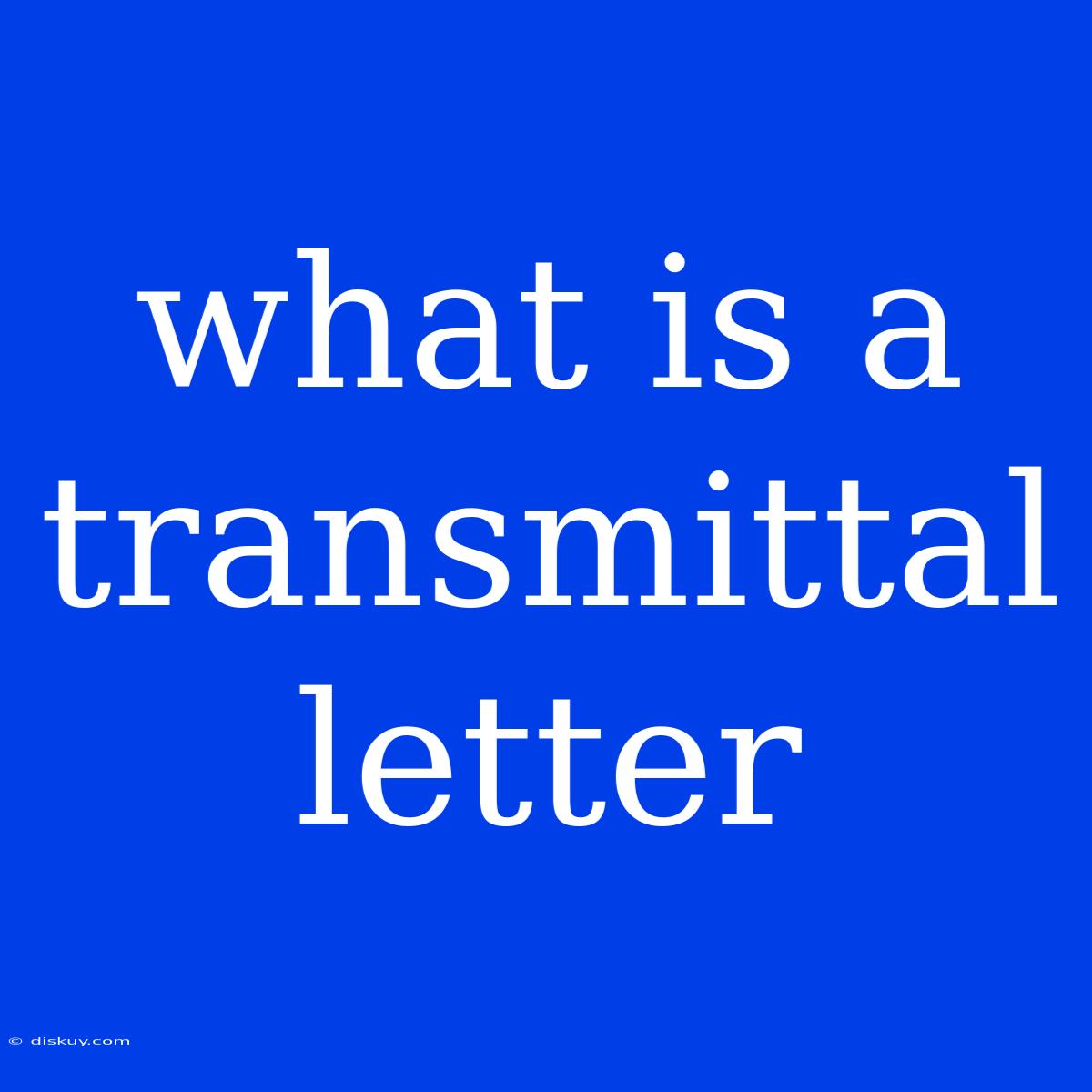What is a Transmittal Letter: A Guide to Sending Documents the Right Way
What is a transmittal letter and why is it important? A transmittal letter acts as a formal introduction to any documents you are sending to another party. It outlines the content of the attached documents, their purpose, and any relevant instructions. This seemingly simple document is crucial for clear communication and efficient document management.
Editor Note: Transmittal letters play a vital role in professional communication, ensuring documents reach their intended recipients with context and clarity.
Why is this important to read? Understanding transmittal letters is essential for anyone who sends or receives official documents, whether in business, legal, or academic settings. It ensures your information is received and understood, avoids confusion, and fosters trust in your communication.
Our Analysis: We have compiled this comprehensive guide on transmittal letters to help you navigate the nuances of their structure and content. We've analyzed numerous examples, explored the benefits of using them, and provided insights to help you craft effective letters for any situation.
Key Takeaways of Transmittal Letter
| Aspect | Description |
|---|---|
| Purpose | To formally introduce and explain accompanying documents. |
| Structure | Typically follows a standard business letter format with specific sections for clarity. |
| Content | Includes a clear statement of purpose, a detailed document list, and any relevant instructions. |
| Importance | Ensures recipient understanding, avoids misinterpretations, and promotes professional communication. |
Transmittal Letter: Key Aspects
Purpose
The primary purpose of a transmittal letter is to clearly communicate the intent and content of the accompanying documents. It acts as a bridge between sender and recipient, providing context and ensuring the information is received and understood correctly.
Structure
A transmittal letter typically follows a standard business letter format:
- Header: Includes sender and recipient details, date, and reference information.
- Salutation: A formal greeting addressed to the recipient.
- Introduction: States the purpose of the letter and introduces the accompanying documents.
- Document List: Provides a detailed list of all attached documents, including titles and any specific references.
- Instructions: Outlines any specific actions required of the recipient regarding the documents.
- Closing: A polite closing remark, followed by the sender's signature and contact information.
Content
The content of a transmittal letter is crucial for effective communication. Here's a breakdown of key components:
- Clear Statement of Purpose: Concisely explain the reason for sending the documents.
- Detailed Document List: Include all attached documents with specific titles and references for easy identification.
- Relevant Instructions: If any specific actions are required of the recipient, clearly outline them.
- Acknowledgement: If applicable, acknowledge any previous communication or discussions related to the documents.
- Contact Information: Ensure the recipient has your contact details for any queries.
Transmittal Letter: Exploring the Connection Between Structure and Purpose
Structure: The structure of a transmittal letter is designed to ensure efficient and clear communication. Each section has a specific role in conveying the sender's message and intent.
Purpose: The purpose of a transmittal letter is to provide clarity and context for the accompanying documents. The structure helps to achieve this goal by:
- Organizing the information: Each section focuses on a specific aspect of the communication, guiding the reader through the content.
- Highlighting key details: The document list and instructions ensure the recipient is aware of the content and expected actions.
- Promoting clarity: The clear format and language make it easier for the recipient to understand the purpose and relevance of the documents.
Transmittal Letter: FAQs
Q: What is the difference between a cover letter and a transmittal letter?
A: While both provide introductory context, a cover letter is typically used for applying for a job or submitting proposals. A transmittal letter is more specific to accompanying documents for administrative or business purposes.
Q: Can I use a transmittal letter for informal communication?
A: While a transmittal letter is primarily used for formal communication, you can adapt it for less formal scenarios, maintaining the core elements of purpose, structure, and content.
Q: What if I have many documents to send?
A: For a large volume of documents, create a comprehensive document list with clear categorization for easy reference. You can also consider using a separate transmittal letter for each group of documents.
Q: Do I need to include instructions in a transmittal letter?
A: Including instructions depends on the specific situation. If any actions are expected of the recipient regarding the documents, it is essential to clearly outline them in the letter.
Transmittal Letter: Tips
- Use clear and concise language: Avoid technical jargon and ensure your letter is easy to understand.
- Proofread carefully: Errors in grammar and spelling can create confusion and detract from your professionalism.
- Tailor the content: Adjust the document list and instructions based on the specific documents and recipient.
- Maintain professionalism: Use a formal tone and professional language throughout the letter.
- Provide contact information: Ensure the recipient has your contact details for any queries or follow-up.
Transmittal Letter: Summary
Transmittal letters are a crucial component of professional communication, providing a structured and clear way to introduce accompanying documents. By using a standard format, focusing on purpose and content, and adhering to professional standards, you can ensure your information is effectively communicated and understood.
Closing Message: Understanding the purpose and structure of transmittal letters can significantly enhance your communication skills, fostering trust and efficiency in your professional dealings. By adhering to the guidelines outlined in this guide, you can create effective transmittal letters that clearly convey your message and facilitate a smooth exchange of information.

